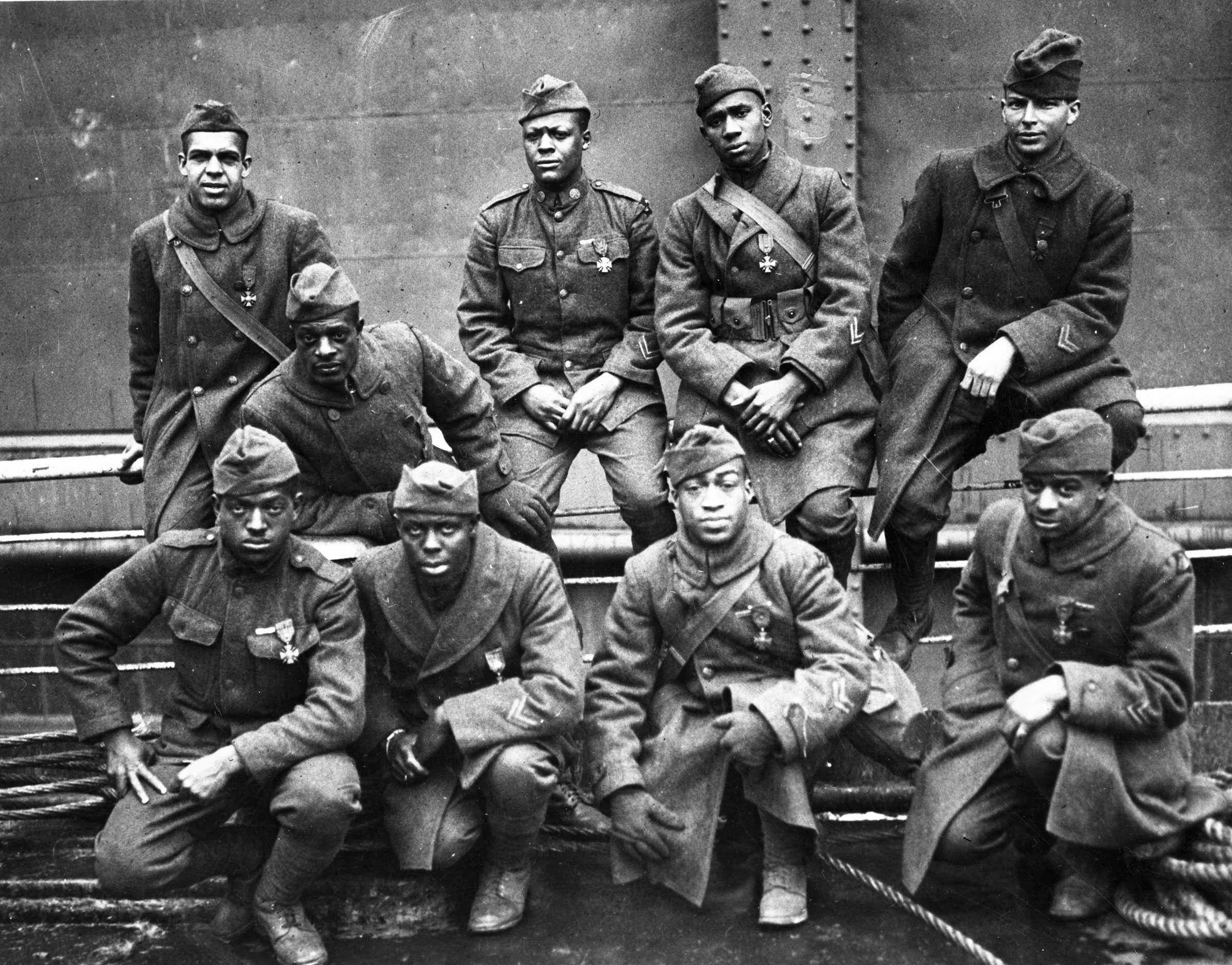Chapter 6
Navigating a Segregated Reality
Segregation did not stop African Americans from building vibrant communities. Black Americans did the same things most Americans did—they visited with friends and family, organized social functions, went to the beach, and attended church. Though segregated, the worlds they built provided a safe haven from insults, mistreatment, and violence.
During the First and Second World Wars, many African Americans developed a new cultural consciousness. After having defended democracy abroad, many returned seeking to defend their rights as American citizens and were committed to change. This new spirit was sometimes referred to as the “New Negro.” Many white Americans resented this change and fought to maintain the racial and social status quo. Mob violence and race massacres against Black communities swept the nation.
Serving in World War I
Sailors on the USS New Jersey
African Americans served in segregated units during World War I. Most had support roles, and those who saw early combat fought alongside French, not American, forces. African American servicemembers hoped their wartime bravery and loyalty would translate to better treatment at home.
Training for war, escaping the South, and traveling to Europe also exposed many to new ideas about race. Those who served returned home more confident and less willing to accept racism.
“Close Ranks” by W. E. B. Du Bois
“Close Ranks” editorial, The Crisis, July 1918
Many African Americans questioned if they should support a war “to make the world safe for democracy” while being deprived of democracy at home. In “Close Ranks,” an editorial for The Crisis magazine, W. E. B. Du Bois argued that African Americans should set aside grievances, show loyalty, and support the war unconditionally. It was a controversial position that generated much criticism. Du Bois later reversed course, arguing that the editorial was a mistake.
Black Women in WWI
Addie Waites Hunton (back center) and Kathryn Johnson (back row, second from left) in France, 1919
During World War I, U.S. Army nurses and the American Red Cross provided patient care. An estimated 1,800 Black nurses obtained certification from the Red Cross for military duty. Facing political pressure and a shortage of nurses, the War Department authorized 18 African American nurses to serve in the Army Nurse Corps in 1918. They worked at Camp Sherman and Camp Grant and lived in segregated quarters. They were only allowed to care for German prisoners of war and African American soldiers.
We were all proud to be Americans, proud to be Black, and proud to be in the 15th New York Infantry.
Melville Miller, Men of Bronze Documentary, 1977
Harlem Hellfighters
Harlem Hellfighters
Formed from the 15th New York National Guard Regiment and nicknamed the “Harlem Hellfighters,” the 369th Infantry was the first African American regiment to reach World War I battlefields. They were also the first Allied troops to march into Germany as an occupation force after the armistice. The regiment spent 191 days in combat, the longest of any American unit.
In appreciation for their actions in the Maison-en-Champagne campaign, the 369th was awarded the Croix de Guerre by the French Government for acts of bravery in conflicts against the enemy. The 369th Regiment finished their service in Europe and returned to the U.S. in February 1919.
Company D, 369th Infantry Regiment at Camp Merrit in New Jersey
Honoring the Hellfighters with the Croix de Guerre
Croix de Guerre awarded to the 369th Infantry Regiment
Because the U.S. Army was segregated, some African American soldiers fought under the French during World War I. The French government awarded the 369th Regiment —known as the Harlem Hellfighters—the Croix de Guerre (War Cross) for their bravery in battle. In addition to this honor, 171 individual members of the 369th Regiment were awarded the Croix de Guerre and the Legion of Honor.
Cpl. Lawrence McVey was awarded the Croix de Guerre and the Purple Heart for leading his squad in an attack against a nest of machine guns in Sechault, France, on September 29, 1918.
